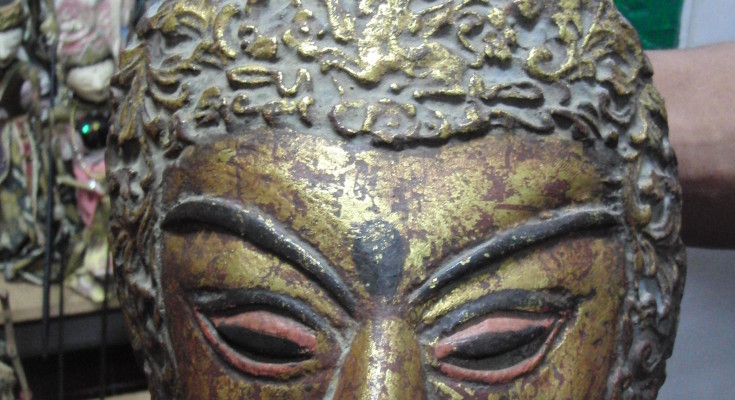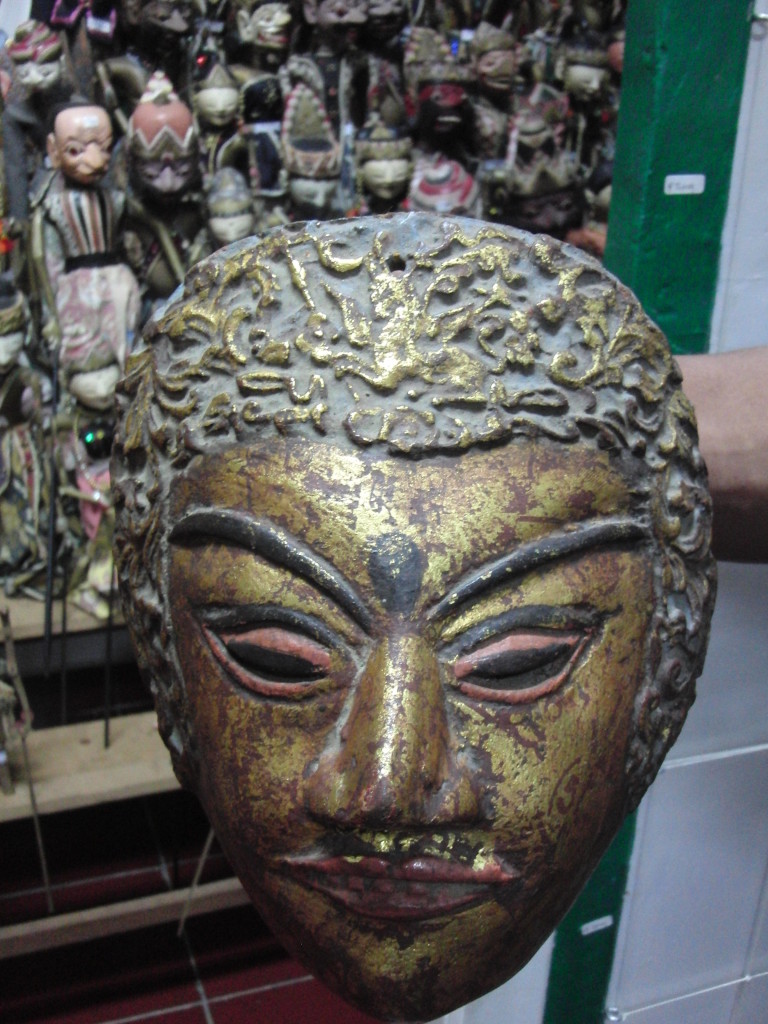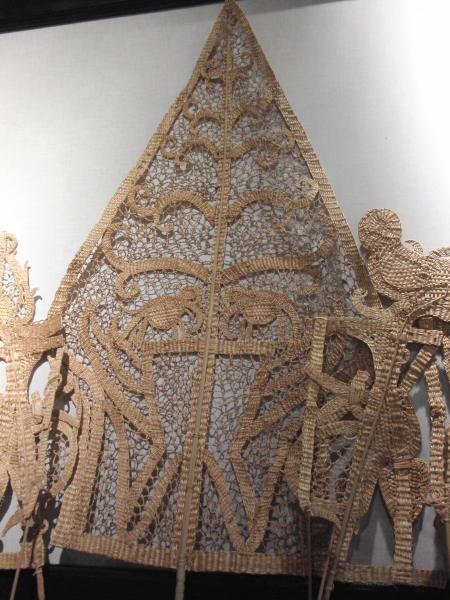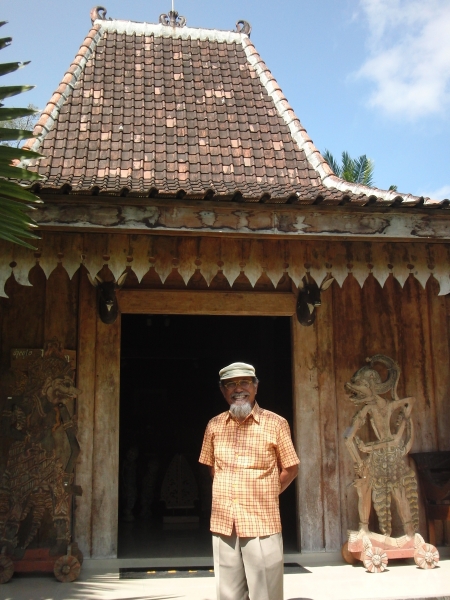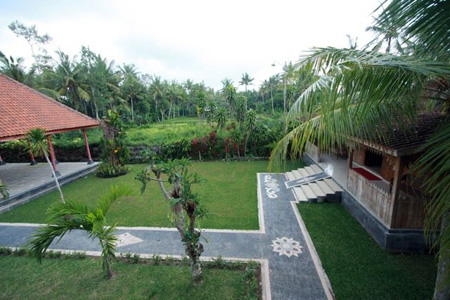By: Maya Liem
Bali is one of the last remaining places in Indonesia with a living tradition of the mask dance and the wayang theatre. The largest collection consisting of 5900 Asian masks and wayang puppets is located in Bali in the new Setia Darma House of Masks and Puppets. We are familiar with the idea that large collections of Asian art are housed anywhere in the world, except for Indonesia. Are we facing a new phenomenon here?
The Setia Darma House of Masks and Puppets (Setia Darma Rumah Topeng & Wayang), is located in the village Kemenuh – Sukawati, south of Ubud, traditionally a center for Balinese mask makers and dancers. The decision to keep the collection in this area was thus a well thought out decision.
A House Full of Masks
The Setia Darma House is not a museum in the strict sense, but a place with a homely, friendly atmosphere. The door of the ‘house’ is always open to welcome guests who are not charged for their visit. The place is built on ten-thousand square meters of land surrounded by beautiful rice fields. Inside the gate, you’ll find three antique Javanese houses, called joglo, which have been taken from Central- and East Java and rebuilt for the exhibition of the masks and puppets. With a well kept and spacious tropical garden surrounding the buildings, you will enjoy the quietness and being away from the tourist hustle and bustle. Inside the exhibition space Andang Sasongko will be your guide, happy to tell you the history and story behind each mask and puppet.
The collection consists of 1200 masks from Indonesia, Africa and Japan, and about 4700 puppets from Indonesia, China, Malaysia, Thailand, Myanmar, Cambodia and Korea. Indonesian masks are collected in Madura, Java, Bali, Lombok, the Batak area of Sumatera, Kalimantan and Papua. As for the Indonesian wayang puppets Setia Darma is the proud owner of puppets from all categories ranging from wayang kulit (flat shadow puppets made of animal skin), wayang golek (three dimensional wooden puppets), wayang krucil (flat wooden puppets), wayang beber (paper scroll with painted puppets), and the Chinese potehi puppets. The Setia Darma collection is the largest and the most diverse in the world. There are other musea with wayang puppets in Indonesia, such as museum Kekayon and museum Senobudoyo in Yogyakarta, and museum Fatahillah in Jakarta, but with a much smaller and less varied collection.
Masks Expressing Human Character
The Satia Darma trustee, A.Prayitno, explain that the idea behind the collection has its base in his personal interest for masks since his childhood. His father’s enthusiasm for the mask dance gave him many opportunities to attend masks dance performances at his birthplace Lamongan (East Java) after each harvest. Already in his childhood he became to understand that masks are not just made for entertainment. The masks have a philosophical and religious message to the community. Each mask expresses a human character, from which everybody, even children, can learn something about the world of the human being. He explains:
“Sometimes you will see characters which can be a woman as well as a man, or a human being as well as a god. Sometimes you see characters which belong to the category of ‘evil’ types, but if you know them better, you will see some ‘good’ character traits as well. So you learn to see beyond borders and classifications. As a child we were taught not to see the world in black and white.
In other words, behind the masks there is a hidden profound message. We also learned that some masks have a function in religious ceremonies which are held for paying tribute to the nature and to the gods. In such performances you will often hear the message that human beings ought to protect the nature and have to be thankful for everything the nature brings to the people.”
Preserving Heritage and Sparking Interest
Lately, Prayitno witnessed a rapid decline in knowledge and interest for masks. Among the Indonesia youth there is a growing tendency to see masks and dances as something old and backward. As if this was not enough, during the Suharto regime many mask dancers stopped to perform, because they were afraid to be associated with the communist party (PKI) and its cultural branch (the Lekra). The mask dance became a tool for propaganda around 1965. Moreover, during the Suharto regime there was a ban on all kind of Chinese cultural expressions, including masked dances, by the Presidential Degree of 1967.
Concerned about this loss of Indonesian cultural heritage Prayitno started collecting masks in 1998 – still before the end of the Suharto regime. He received support from many friends, Hadi Sunyoto with his financial support being one of the most pivotal. With this help Prayitno set up a network of people who went to search for masks in every corner of Indonesia. They went to visit experts in masks, regional departments of Arts and Culture, traders of antiques and many others. Finally they bought not only masks, but wayang puppets and gamelan sets as well.
The result was most satisfying. Prayitno was able to collect unique pieces, among others very rare Madurese masks, large antique masks from Papua, Chinese shadow puppets, marionettes and quite unknown potehi puppets from Malang. ‘I regret that I didn’t succeed to find the rare ‘bobu’ mask from Flores,’ comments Prayitno.
The first exposition was held in 2006 with the opening of the Setia Darma House. Prayitno explains that the main aim of the Setia Darma team is to inspire people to learn about the culture of the past for the benefit of the present and future life. The ‘house’ is meant to become a centre of study and a place to promote and develop the art of masks and puppets. A massive renovation which is expected to be finished by the end of 2011 will add more space and facilities to the ‘house’ including a study centre, a multifunction hall, a coffee shop and a space for performances.
See the website of Setia Darma.
Setia Darma House of Masks and Puppets
Jl. Tegal Bingin
Banjar Tengkulak Tengah
Kemenuh Village Sukawati
Gianyar, Bali
Phone: +62 361977404

